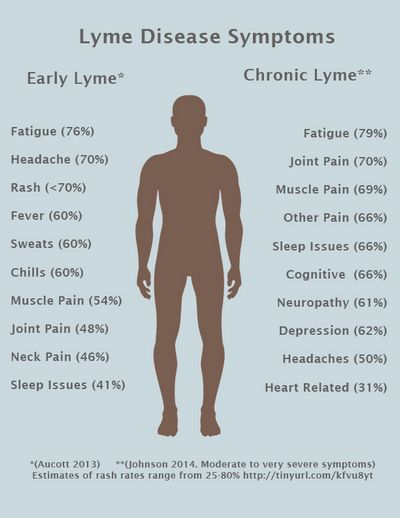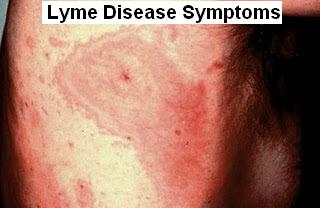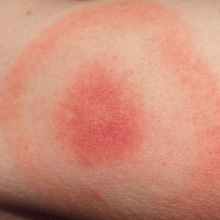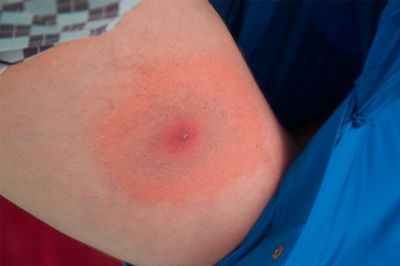The most common and easily recognizable symptoms of Lyme Disease are fatigue, joint pain and/or swelling, pain during sleep and at rest, and malaise.

Lyme Disease can cause many complications, including arthritis, heart disease, blindness and brain damage. The infection is usually restricted to the joints, although early or severe cases can also affect the heart.
The early symptoms of Lyme Disease are often confused with those of other illnesses, particularly those caused by bacteria. An infected tick bite can leave an open sore that will quickly begin to heal on its own, so treatment for early symptoms of Lyme Disease is often delayed. Most people experience mild symptoms within four weeks of a tick bite, though some may develop more serious complications after the first few weeks. Early symptoms and/or complications of Lyme Disease include:
There are several factors that can lead to a delay in seeking treatment for early symptoms of Lyme Disease. Some people might not feel well or might choose not to notify their doctor or go to the hospital right away.

Lyme Disease often begins to show up when the patient is sleeping, so if someone has this condition and is sleeping when they experience a headache or backache, they might be at risk for an infection. Early symptoms of Lyme Disease are often misdiagnosed as fatigue and therefore lead to unnecessary delays.
Lyme Disease can occur in individuals of any age or sex. The symptoms of Lyme Disease, especially the early symptoms, can mimic those of a number of different illnesses. A lack of a strong immune system can also cause the symptoms of Lyme Disease. When Lyme Disease is treated with antibiotics, the bacteria causing it can be destroyed. Antibiotics are typically given for two weeks to a month, depending on the severity of the infection.
Many people do not realize they have the possibility of developing a chronic condition such as Lyme Disease until they are bitten. Lyme Disease is caused by an infection with a spirochete bacterium, which causes a painful infection that occurs inside the body without causing any signs or symptoms.

The bacterium enters through a cut or puncture to the body’s connective tissue, such as the skin. The bacterium then multiplies in the body, causing the infection and eventually attacking healthy cells in the digestive tract.
Once inside the body, the infection reproduces itself and creates new infection. These infections can spread from one area of the body to another and can cause the spread to any organ. The bacteria can also attack normal tissue in other parts of the body, creating more symptoms or spreading into the bloodstream. This makes Lyme Disease a very serious condition and should not be taken lightly.
The earlier symptoms of Lyme Disease are recognized, the faster treatment can be started. Symptoms of Lyme Disease are often mistaken for conditions caused by the flu, and the sooner treatment can begin, the sooner the symptoms will subside. Early detection of the disease can help to ensure a speedy recovery and full recovery.
If you or a loved one has developed symptoms of Lyme Disease, contact your doctor as soon as possible and ask him/her to test for the virus in the blood.

This test is done only if your doctor suspects the possibility of an infection with a spirochete bacterium and can be done in the lab under the strictest laboratory conditions.
When it comes to dealing with the symptoms of Lyme disease, some of the most common symptoms include arthritis, memory problems, arthritis pain, muscle weakness, fever, and fatigue. Other symptoms, such as swelling or a rash, may also occur after the infection is treated with antibiotics. If you experience any of these symptoms, see a doctor right away.
Although many doctors recommend medical treatment, there are other ways to treat symptoms of Lyme disease. One option includes taking Vitamin B6 supplements or using a topical treatment containing Doxycycline.
For those who suffer from persistent symptoms, it may be necessary to take antibiotics for a long term treatment. Although antibiotics have been proven to reduce the number of bacteria that causes the infection, they do not completely eliminate the bacteria. This is why it is so important to seek out a doctor’s opinion before beginning treatment for Lyme disease. If the doctor diagnoses you with Lyme disease, it is important to discuss your options with your doctor about the possibility of taking antibiotics or any other medical treatments you may need.